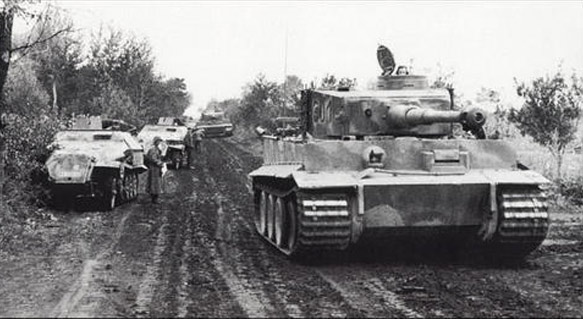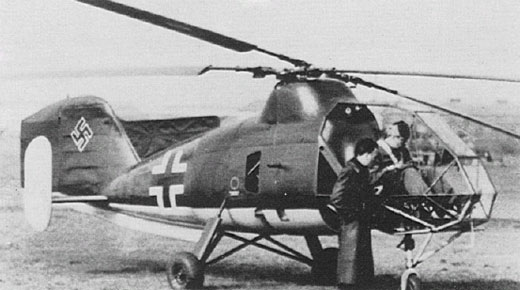This would improve things for Dornier and since Dornier is not one of the main providers of bombers ITTL, it could probably really use the business.
In hindsight the Do-335 could have served a lot of roles.
Agreed, according to wiki it could carry up to a 2,200 lb bombload when acting as a fighter-bomber for example.
I believe there's been discussion.. maybe even on the boards here... about some of the seeming inefficiencies and waste inherent in the Nazi bureaucratic system.
Such that, even mid war factories weren't used or were underutilized etc because "X company only builds Y and that's what they should stick too!" No seeming thought for "Well X company has Z factories barely producing washing machines atm... Lets see if we can re-tool the place to make something else."
Hence comments about Dorneir not being too stretched in its capacity to make the 335 along side what ever else it is (Or, in real time line 'Was') producing.
Looking at the American system.. maybe they went too far in the other direction?
"Have ALL the car factories make X tank NOW! ALL the time!"
"Um.. but what if...?"
"NO 'What ifs?' ! ALL the factories! ALL that type of tank! ALL the time!"
*America builds oodles of light/medium Shermies*
*Tankers encounter Tiger*
"EEP! We need this other type of tank!"
"Too bad. Only making this one."
But, then again reading about some of the bureaucratic strangeness that came from within British bureaucracy maybe ALL such over arching structures develop such problems (Read the 'Radial fighters for RAF thread. Some amazing comments about the English engine designers and their outlooks/behaviors)... it's just different problems growing out of the fundamental different 'Worldviews' of said bureaucracies...
True, true. Was just trying to point out the behind the scenes 'Why we do these things" mentality and how such effect the butterflies in Wagner's reality.
Is also not so crash hot if they have better and enough to equal.
Link to amazing computer model of German "What if?" jet Arado E 555
http://www.secretprojects.co.uk/forum/index.php/topic,24180.0.html
My overall impression is that such issues, while present to some extent in the weapons development process of all countries, were exacerbated far beyond their normal degree by Hitler. The difference here is not that they aren't present at all but that they aren't abnormally pronounced.
We had more, they had better.
More is always better than simply better.
"Quantity has a quality all its own."
I was under the impression that they weren't even much better.
From what I've read, they could sometimes be... when they functioned properly.
Here is the second part of the chapter. As before, much of what is written here is shaped by what readers have written in this thread, as well as this https://www.alternatehistory.com/forum/threads/ideal-1930s-1940s-german-military-equipment.391886/ interesting timeline. Comments very much welcome.
(Section Two)

The battleship Jean Bart, photographed during maneuvers with other Axis vessels.

The battleship Jean Bart, photographed during maneuvers with other Axis vessels.
In no area were the allies Germany had acquired through the European Treaty League of more direct assistance to the furthering of Wagner’s military ambitions than naval warfare. The Kriegsmarine had begun the conflict as a finely honed commerce raiding force, and had performed its function with great effectiveness, but in all other respects could not compare to the British Royal Navy or even to the Kaiser’s High Sees Fleet of the Great War. But the combination of the French, Spanish, German, and Italian navies was a different beast entirely, the Marine nationale and Regia Marina possessing considerable numbers of capital ships in addition to smaller vessels and submarines. The Armada Espanola and Doenitz’s fleet (the battlecruisers notwithstanding) did not add much in the way of capital ships, but they did enhance the depth of the League’s fleet and made it a more well-balanced force. And although most of the ETL’s war effort not devoted to air power was allocated to supporting the ground forces massing in the east in preparation for Hermann, Wagner did approve a modest naval construction program, known as “Plan Y,”(a) the centerpiece of which was that the French would complete the building of two Richelieu-class battleships and the Italians another of the Littorio-class, which had been begun before the war and could be completed by the middle of the decade. Meanwhile, the construction of two new Barbarossa-class battlewagons would begin in shipyards in Hamburg and Wilhelmshaven which had been extensively restructured along American lines since the completion of the Moltkes. Mounting eight sixteen-inch guns, heavily armored with a displacement of over 50,000 tons, and capable of a 31 knot top speed, they would be among the most advanced of their contemporaries.(b) Ships dating to the First World War were also to be given refits as needed.

IJN Submarine No. 71, of an advanced design which was to assist the Kriegsmarine with the next generation of U-boats.
On the whole, the combined ETL fleet would still be somewhat outmatched by the Royal Navy. In particular, it was lacking when it came to sea-based airpower, there being only one available aircraft carrier, the French converted battleship Bearn. This meant that control of the sea could only be contested in areas over which the League’s air force made itself felt, and could only be achieved in those over which the latter had attained superiority, a precondition which could only be counted on with a large degree of confidence once the war in the east was concluded and the bulk of the Luftwaffe available for operations elsewhere. Another problem was the multilingual and national composition of the force, which could hamper effective coordination. To rectify this, oil shortages being a thing of the past for Axis Europe by 1942, lengthy large-scale exercises involving all four navies were begun in the Mediterranean, including the use of ships of different nations in the same formations. Standard signaling and coding procedures were also established. To enhance the ETL’s ability to conduct amphibious operations, further transaction with Japan was undertaken, with designs for the large Japanese SS-class amphibious assault craft being exchanged for 50 Pak 40 antitank guns. The Japanese also proved willing to allow access, in return for examples of machine tools to construct more up-to-date armored vehicles than those current with the IJA, to the design of the experimental Submarine No. 71, which would speed the development of new submarines, to give the Ubootwaffe the ability to penetrate the Royal Navy’s new convoy defenses.

A column of Lion tanks along with half-tracks during Operation Hermann.
Of course, at the time the spotlight was squarely on the great land effort which was to open shortly. And the new Common Market’s factories did not disappoint here either, providing the Heer with a great increase in logistical capacity, firepower, and above all, mobility, compared to what it had possessed for the push into France the year before. From late 1941, a new variant of the Panzer IV had been introduced, equipped with the 7.5 cm Pak 40, which would allow the tank to remain capable against the Soviet T-34, which had been shown to be an unnervingly formidable vehicle during the Autumn War. Most already existing Panzer IVs were also re-equipped with the new gun in time for the beginning of the war in June. In addition, in early 1942 the new Lion heavy tank entered production. It will be recalled from Part 3 that the Volkswehr had foregone heavy tanks during the 1930s, instead concentrating on assault guns which could be produced in greater numbers. The enormous increase in the economic capacity at the Axis’s disposal since then caused the OKV to reexamine its earlier decision. The Lion was of an uncomplicated design, and visually resembled an upsized Panzer IV. Weighing 45 tons and mounting an 8.8 cm gun, it was to be employed in special heavy tank battalions.(c) There was one new feature, interleaved road wheels, intended for improved cross-country mobility, which was in practice to have mixed results. The number of heavy artillery pieces per infantry division was also increased considerably in the several months leading up to the summer start date.

One of the new Fl 282 helicopters.
Helicopters, a relative novelty, were also beginning to make an appearance, with a few dozen Fl 282s and Fa 223s operational by then, in artillery spotting and transportation roles. The situation pertaining to the supply of trucks was also improving, to the point that the proportion of motorized infantry, which was vital in sealing off encircled enemy pockets and preventing formations within them from escaping in the vastness of the Soviet Union, also grew. Here, however, the limitations of even the expanded German economic sphere were on display. Despite the automotive industry having been greatly expanded during the prewar years, to which was now added the rest of the ETL’s, it was still necessary to purchase several tens of thousands of trucks from the United States to meet the demands of both motorization and adequate supply. Nor were more primitive means abandoned. The Axis forces, indeed, would enter Stalin’s domain with nearly a million horse-drawn carts, which were to play an important role in overcoming the problems posed by the primitive condition of the Soviet road network. Lastly, following on the preliminary examination of the possibilities of atomic explosives mentioned previously, the Hamburg Program was begun, located mainly in Norway on account of the heavy water plants there. Wagner himself had been somewhat skeptical of the purported power of nuclear explosions, saying that they "have the ring of a science fiction weapon too good to be true," but was convinced to support the Program when Fritz Todt pointed out the dire ramifications which could result from being wrong and another country acquiring a significant lead in the acquisition of such weapons.(d)
Notes:
(a) Of course, this would be quite a burden for the prewar Germany alone, but is much less so considering the size of the ECM.
(b) Essentially the H class, weighing slightly less and a little faster.
(c) The OTL Tiger tank, but not overweight with the resultant reliability problems.
(d) The revised sequence of events for the German nuclear project as discussed some pages back.